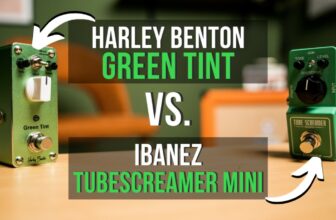Line 6 POD Go Review & Demo (With Video)
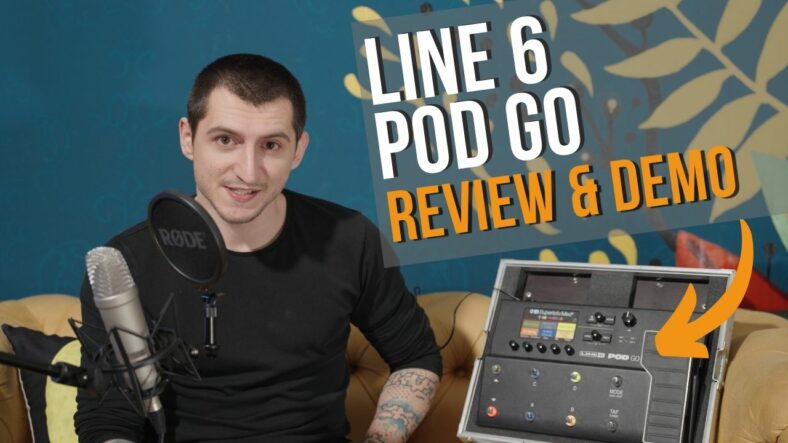
The Line 6 POD Go is a versatile multi-FX guitar processor that offers a wide range of sounds and effects. With its compact and portable design, built-in expression pedal, and connectivity options, the POD Go is a great, feature-packed, and cheaper alternative to conventional pedalboards.
This is a practical and versatile solution for gigging and practicing. Guitar processors take portability, versatility, and playability to the next level, making them a suitable choice for this situation.
I got my hands on the Line 6 Pod Go and we’ve put together a pretty comprehensive review and demo video of it here:
In this article, I’ll be taking a look at the Line 6 POD Go, giving you a detailed review of its features and capabilities.
Line 6 POD Go
Pros
- Compact and portable design
- Powerful quad-core processor and 32-bit floating-point DSP
- Built-in expression pedal and a range of connectivity options
- Over 250 built-in presets
- Customizable channels, controls, and effects
Cons
- Maybe a bit overwhelming for beginners
- No touchscreen which would improve the overall usability
Specs
The Line 6 POD Go boasts a powerful quad-core processor and 32-bit floating-point DSP, ensuring responsive performance. It also comes with a built-in expression pedal and a range of connectivity options, including USB, MIDI, and stereo-balanced outputs. The POD Go also features a built-in tuner, making it a convenient all-in-one solution for guitar players.
Controls Overview
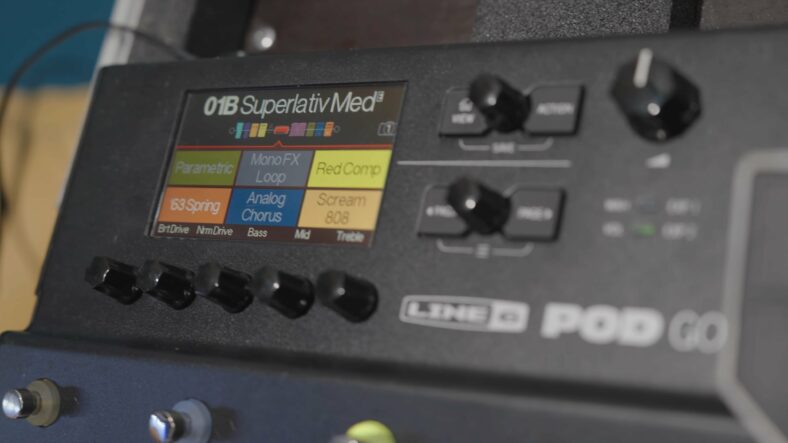
The control overview is divided into two parts, the bottom and the top half which correspond with one another. This is actually the best part about this processor. You can manipulate and shape the sound according to your preference.
The top dial is used to navigate and select different blocks and effects types while the bottom dial is used to cycle between different effects. Additionally, if you push down the bottom dial, you can then select from one of the different effects types that are available for a particular preset.
You can even edit the parameters for each selected effect using the additional dials found below the screen. If you hold down one of the dials, you can even map, rearrange, and assign a particular control through the Learn function.
The selection process for the effects works the same way. You use the top dial to select a particular effects type while the bottom dial lets you cycle between all the different effects within that type. Once you select an effects type and particular effect, you just press the bottom dial again and you’re good to go.
Now, the additional options for both dials are also quite useful. The View button directs you to Stompbox mode where you can see where each stompbox is in correspondence with the footswitches. The Action button lets you rearrange the effects types through the signal chain and place it wherever you want.
The bottom dial features the Page buttons. These page buttons are used when there are more parameters that actually fit the screen. You can use these buttons to move along the page to see or adjust a particular parameter.
The stompbox is also fairly easy to configure. By pressing the View button, you can view the stompboxes, but if you want to change into Preset mode you can click the Mode switch and select which preset you want, and press the Mode switch again to save it.
The Tap/Tempo button should be immediately obvious. If you tap the Tap/Tempo switch, you manually enter a preferred tempo. If you hold down the switch, you jump into the tuner.
Sounds
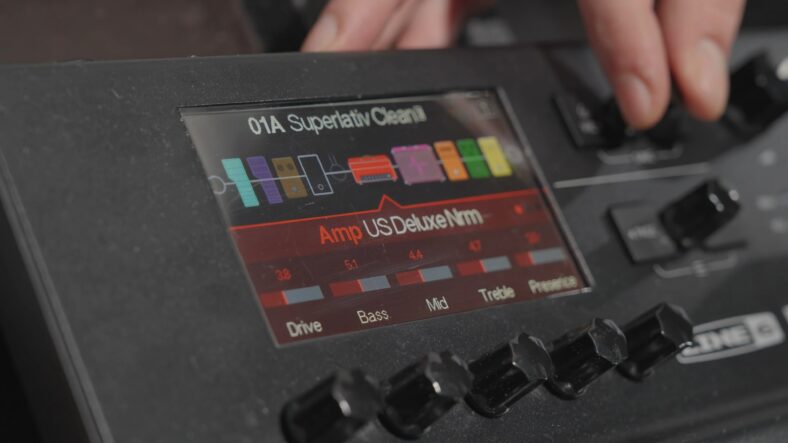
The POD Go offers a wide range of sounds and effects, from classic to modern, with over 250 built-in presets that can be customized to your liking. You can also record and edit your own sounds, allowing you to create custom presets tailored to your specific needs.
Connectivity
The POD Go has a variety of connectivity options, including USB, MIDI, and stereo-balanced outputs. This allows you to easily connect to your computer, mobile device, or other recording equipment. The POD Go can also be used as a USB audio interface, allowing you to record your guitar directly to your computer. With a headphone out and an amp out, the POD Go is a great choice for practice sessions as well.
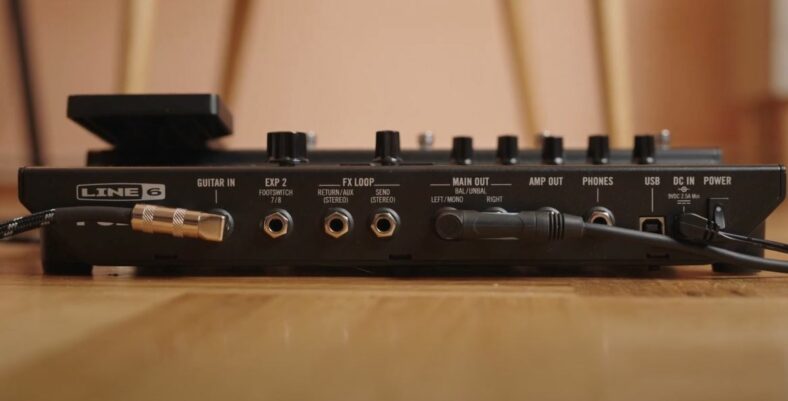
Pros & Cons
Pros
- Compact and portable design
- Powerful quad-core processor and 32-bit floating-point DSP
- Built-in expression pedal and a range of connectivity options
- Over 250 built-in presets
- Customizable channels, controls, and effects
- Can be used as a USB audio interface
Cons
- Maybe a bit overwhelming for beginners
- No touchscreen which would improve the overall usability
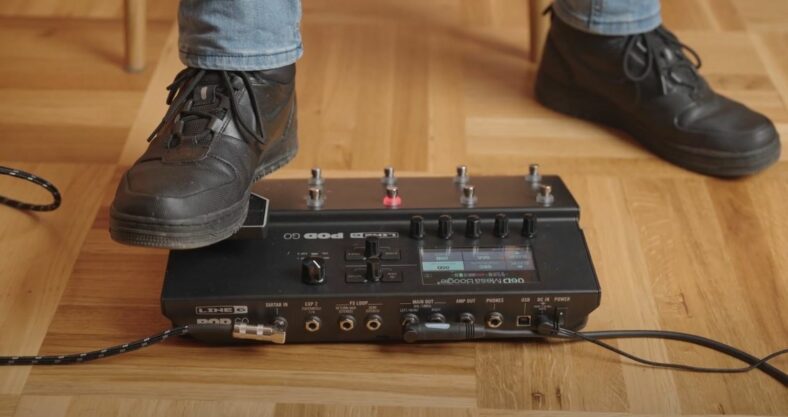
Verdict
The Line 6 POD Go is an extremely versatile multi-FX guitar processor with a wealth of features and capabilities. Its compact and portable design, powerful quad-core processor, and range of connectivity options make it a great choice for guitar players of all levels. It also doubles down as a USB recording interface. Overall, it’s a worthy alternative to conventional pedalboards and even comes at a reasonable price.



